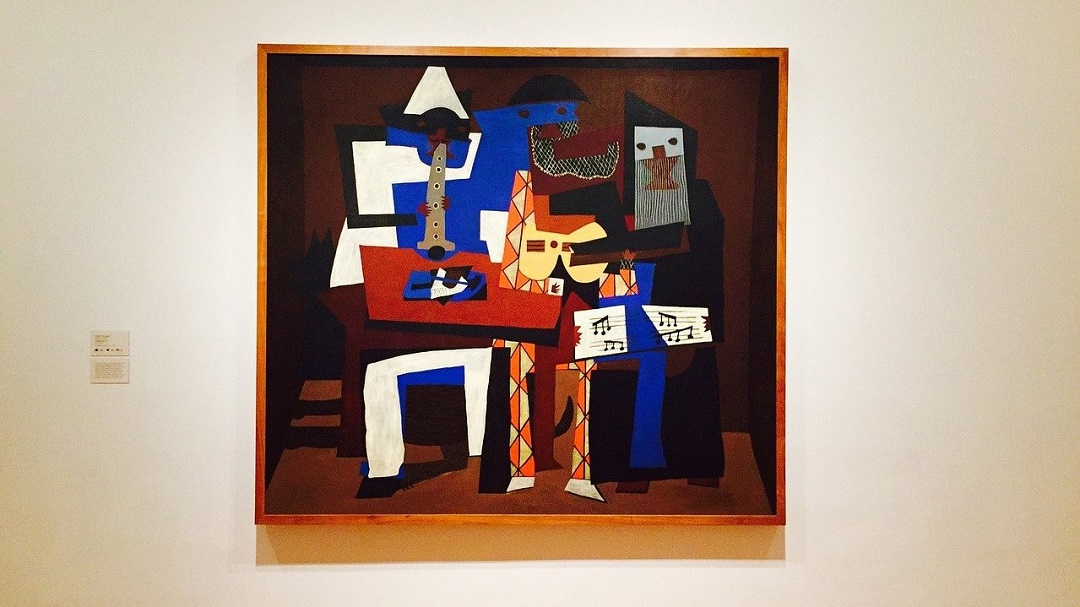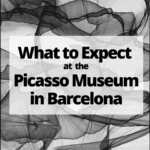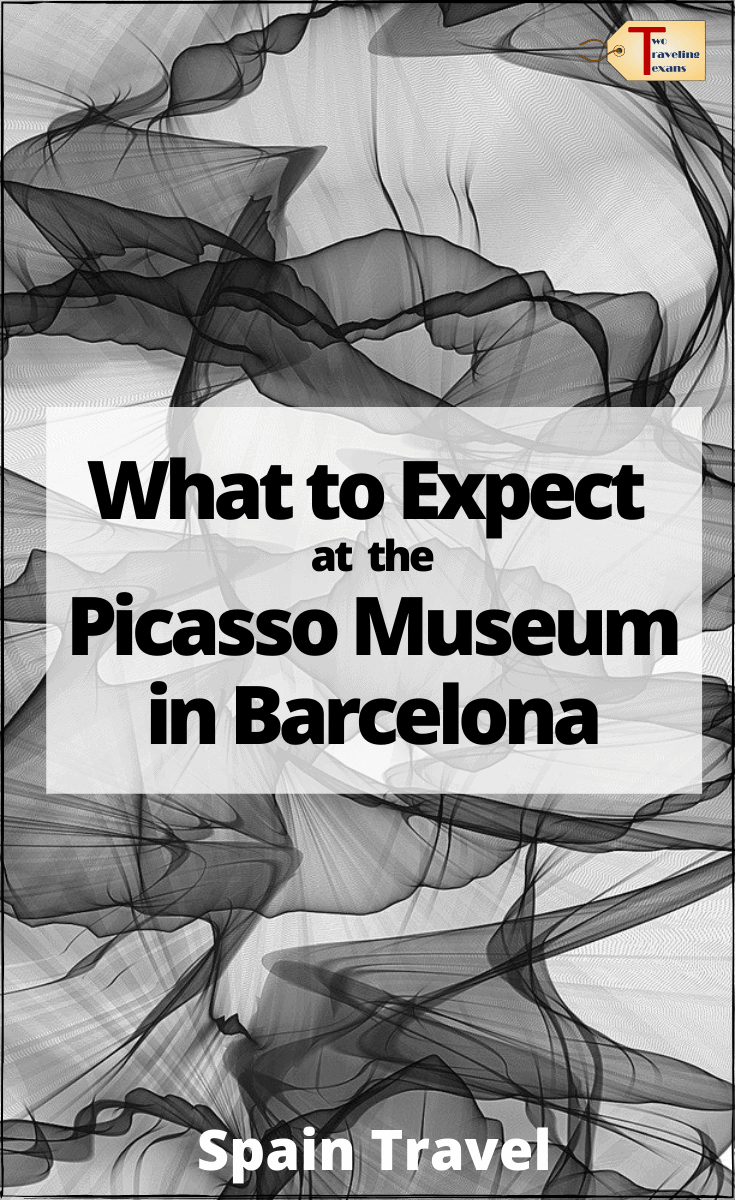Picasso is arguably one of the most famous artists ever, which is one of the reasons that the Pablo Picasso Museum Barcelona is so popular. While he may be best known for his cubist paintings, you won’t see these in this museum.
This Picasso Museum (Museo Picasso Barcelona) focuses on the artwork he did during the early part of his life. I enjoyed my visit because it helped me learn more about Picasso’s life and appreciate what an incredible artist he is.
Let me give you some tips and tell you what you can expect when you visit the museum.
Note: This post contains affiliate links. Please see disclosure for more information.
Unfortunately, at the time of our visit no photography was allowed inside the museum, so all the pictures in this blog post are Picasso’s work that I have seen in other museums such as the Metropolitan Museum of Art.
If you are unable to travel, you can take a virtual tour of the Picasso museum in Barcelona here.
Contents
- Picasso’s Life Story
- Artwork in the Picasso Museum
- How Much Time Do You Need in Picasso Museum Barcelona
- How to Get to the Barcelona Picasso Museum
- Where to Stay Near the Picasso Museum in Barcelona
- Barcelona Picasso Museum Tickets
- Should you get the audio guide at the Picasso Museum in Barcelona?
- Can You Take Photos Inside the Picasso Museum in Barcelona?
- Barcelona Picasso Museum Opening Times
- Is the Barcelona Picasso Museum Good for Kids?
- How To Visit the Barcelona Picasso Museum for Free
- Is the Picasso Museum in Barcelona Worth Visiting?
- Expert Tips for Your Visit to Picasso Museum Barcelona
Picasso’s Life Story
To fully appreciate the artwork on display at the museum, it is helpful to understand a little bit about the life of the artist, Pablo Picasso. Born in Malaga, Spain, Picasso spent his formative years in Barcelona from the age of 14 to 23. You can learn more about his early life by watching this documentary.
Picasso later moved to Paris where he experienced a tragic event that greatly influenced his work. His best friend and fellow artist, Carlos Casagemas, committed suicide, leading Picasso to enter his Blue Period. During this time, the dominant color in his paintings was blue, reflecting his somber mood.
After a few years, Picasso found love and support in his relationship with Fernande Olivier, and his artwork became more cheerful and colorful, marking the start of his Rose Period. At the age of 25, Picasso developed the painting style that we now call Cubism. In Cubism, the subject is depicted in abstract, geometric forms, often resembling a kaleidoscope.
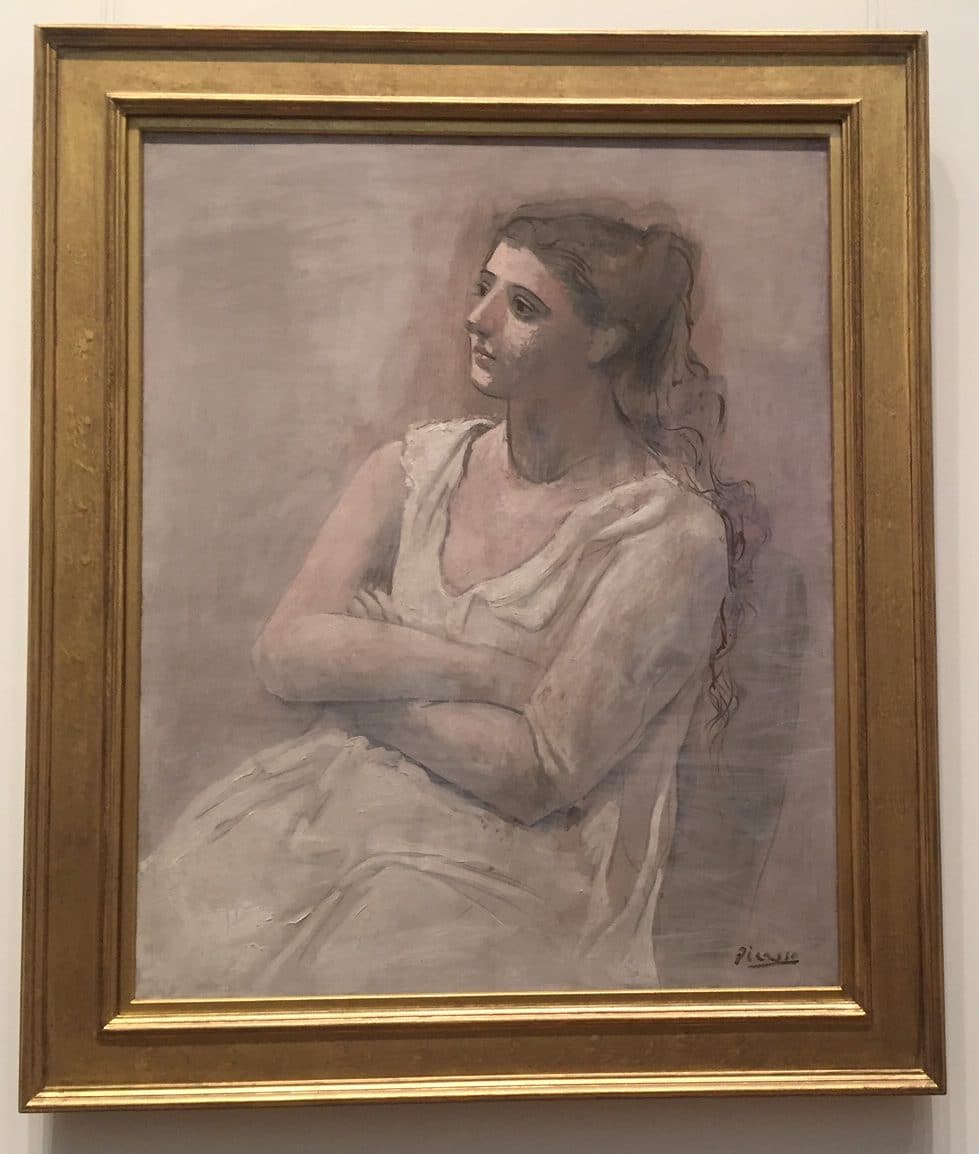
After marrying his first wife, Olga Kokhlova, and welcoming their son into the world, Picasso entered what is commonly referred to as his Classical Period. During this time, his art featured more realistic depictions of people, which had always been his favorite subject.
Picasso’s life was filled with a wealth of experiences and inspirations, all of which left their mark on his artistic style. By exploring his life and the events that shaped him, one can gain a deeper appreciation for his work and the significance it holds.
Perhaps his story would make a compelling Lifetime movie? I would love to see Antonio Banderas portray the artist on screen. Regardless, there is no doubt that Picasso’s legacy continues to captivate and inspire people around the world.
RELATED: Met vs MOMA: Which Museum is Best?
Artwork in the Picasso Museum
The Picasso Museum in Barcelona offers a fascinating glimpse into the life and works of the iconic artist. The collection is thoughtfully arranged in chronological order, with a strong emphasis on his early works, some of which were painted when he was just 14 years old. It’s remarkable to see the level of skill and attention to detail that Picasso displayed at such a young age.
One of his most famous paintings, “Science and Charity,” features a doctor modeled after his father. What I find particularly intriguing about this piece is the perspective trick that Picasso employed, which makes the bed appear to shrink and grow as you move back and forth. Picasso also featured his father and mother in several other paintings, offering a glimpse into his personal life and relationships.
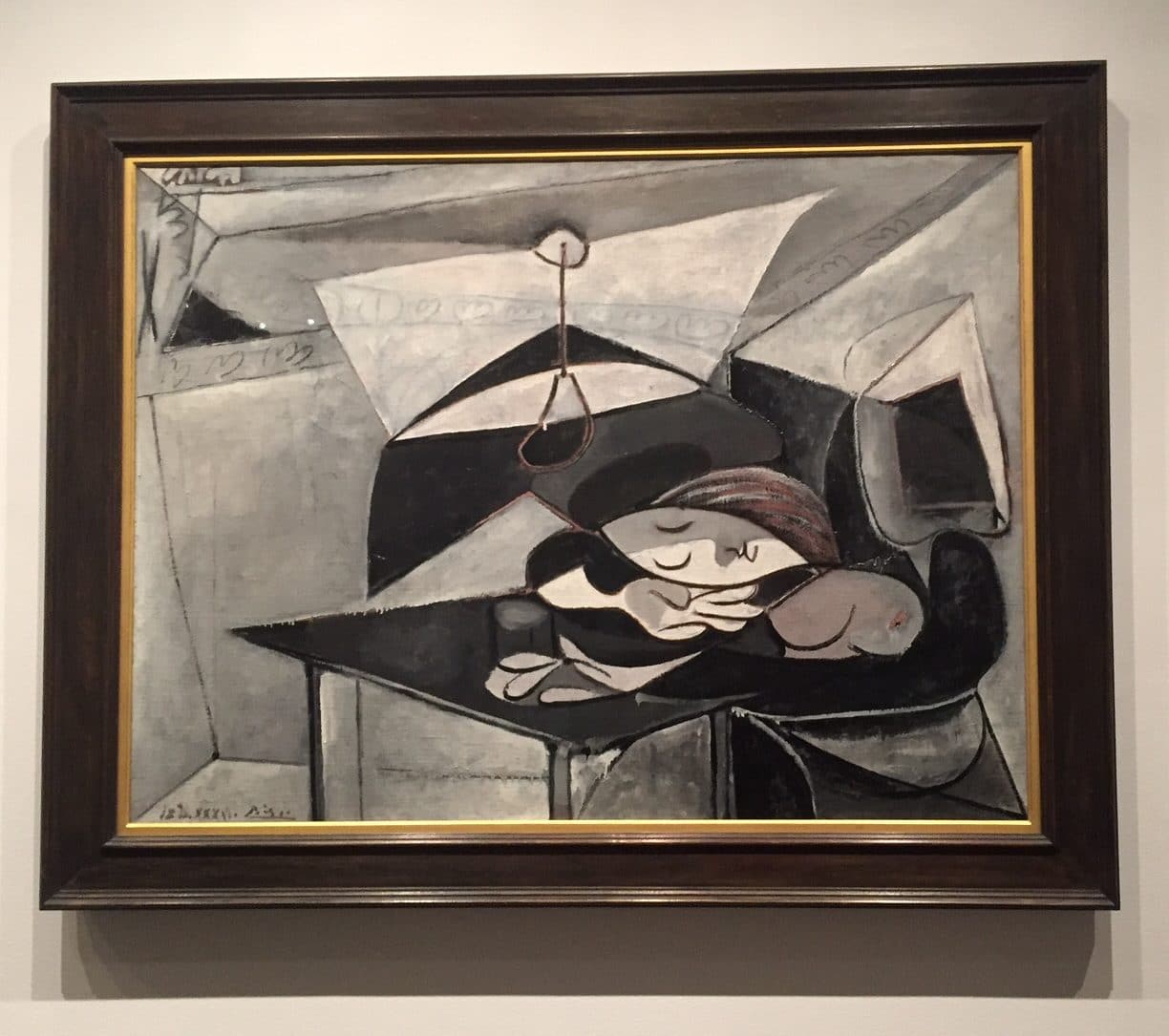
The Blue and Rose periods showcased the intense emotions that Picasso was experiencing at the time, with the Blue paintings reflecting a dramatic and melancholy mood and the Rose paintings exploring more sexual themes. It’s also fascinating to see the sculptures of Fernande Olivier, who had a significant impact on Picasso’s life and work.
Their passionate and intense relationship, which lasted for seven years, has been the subject of much speculation and interest. Apparently, twenty years after they separated, Olivier wrote several articles for a Belgian paper about their time together, which would undoubtedly make for an interesting read.
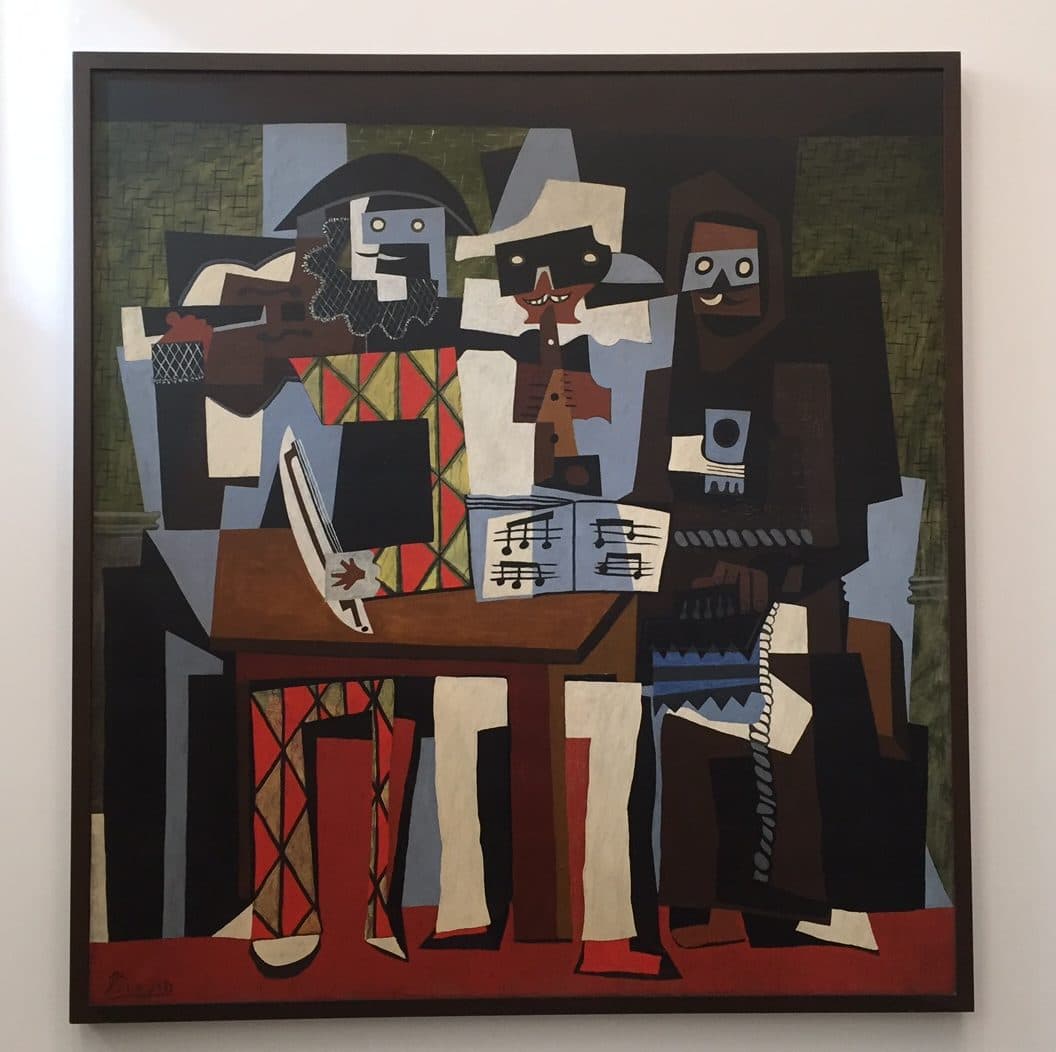
Picasso’s reinterpretations of Diego Velazquez’s masterpiece, Las Meninas, are another highlight of the museum. He created 40 different versions of the painting, each with its own unique style and interpretation. The works demonstrate his creativity and imagination, while also showcasing the connection he felt to Velazquez’s original piece.
The final section of the museum showcases Picasso’s later works, which are characterized by their childlike simplicity and bold use of color. The cheerful subjects and ceramics are a joy to behold, and it’s remarkable to see how Picasso’s style evolved over time.
RELATED: Rodin Around the World
If you liked the early works here, you should also read about the special exhibition Pablo Picasso: The Legacy of Youth. It offers another look into his formative years and sheds light on the influences that shaped his artistic vision.
How Much Time Do You Need in Picasso Museum Barcelona
To fully appreciate the Barcelona Picasso Museum and its impressive collection, I would recommend dedicating around 1.5 to 2.5 hours to explore all the galleries. However, if you are a true fan of Pablo Picasso’s works, you may want to take a bit more time to fully immerse yourself in his art.
Before you leave, don’t forget to stop by the Picasso Museum shop where you can find a variety of souvenirs, such as prints, books, and postcards, to commemorate your visit. It’s the perfect way to bring a piece of Picasso’s legacy home with you.
How to Get to the Barcelona Picasso Museum
The Picasso Museum is situated in the charming El Born district in Barcelona, easily accessible by public transport with the nearest metro stops being Jaume I or Arc de Triomf.
During our stay, we were fortunate enough to have our hotel located not too far from the museum, allowing us to take a leisurely stroll there while admiring various pieces of public art on the way. The museum blends in perfectly with the surrounding neighborhood, so it could be easy to miss except the long line of art enthusiasts waiting to get in gives the location away.
RELATED: Barcelona Aerobus: The Best Way from BCN Airport to the City Center
Where to Stay Near the Picasso Museum in Barcelona
Picasso fans should definitely consider staying at the K+K Hotel Picasso during their visit to Barcelona. This boutique hotel is located on Passeig Picasso, just a short 5-minute walk from the Picasso Museum, making it an ideal base for exploring the artist’s legacy in Barcelona.
In addition to its prime location, the K+K Hotel Picasso offers a range of amenities that will appeal to fans of the artist. The hotel’s stylish rooms feature contemporary decor and are equipped with modern amenities such as flat-screen satellite TV, complimentary coffee and tea, and a minibar. The rooftop swimming pool offers stunning views of the city, and the on-site restaurant serves Spanish cuisine, including tapas dishes, for a taste of local flavors.
Guests can also enjoy a buffet breakfast in the Picasso’s restaurant or relax with a cocktail in the hotel’s café or lobby bar. And with free Wi-Fi available throughout the hotel, visitors can easily stay connected and share their experiences with fellow art enthusiasts.
The hotel is situated in the trendy Borne district, which offers plenty of options for dining, shopping, and entertainment. Las Ramblas and the Gothic Quarter are also within walking distance, making it easy to explore other top attractions in Barcelona. Overall, the K+K Hotel Picasso offers the perfect blend of location, style, and amenities for any art lover visiting the city.
Check price and availability for the K+K Hotel Picasso here.
Barcelona Picasso Museum Tickets
To avoid waiting in long lines and ensure entry to the Picasso Museum, I highly recommend that you purchase tickets in advance. Keep in mind that the advance tickets are timed, so plan accordingly.
For adults, the entrance fee to see the collection is €12 (or €17 with the audioguide), while students with IDs and visitors 18 years and younger can enjoy free admission. Those between 18 and 25 years of age and visitors over 65 can receive a discounted Picasso Museum Barcelona ticket. Additionally, the museum offers free admission during select times each week (more on that below).
If you find that tickets are sold out for your desired time slot, don’t worry – you can still enjoy a skip-the-line tour through Viator. Click here to check options and schedule.
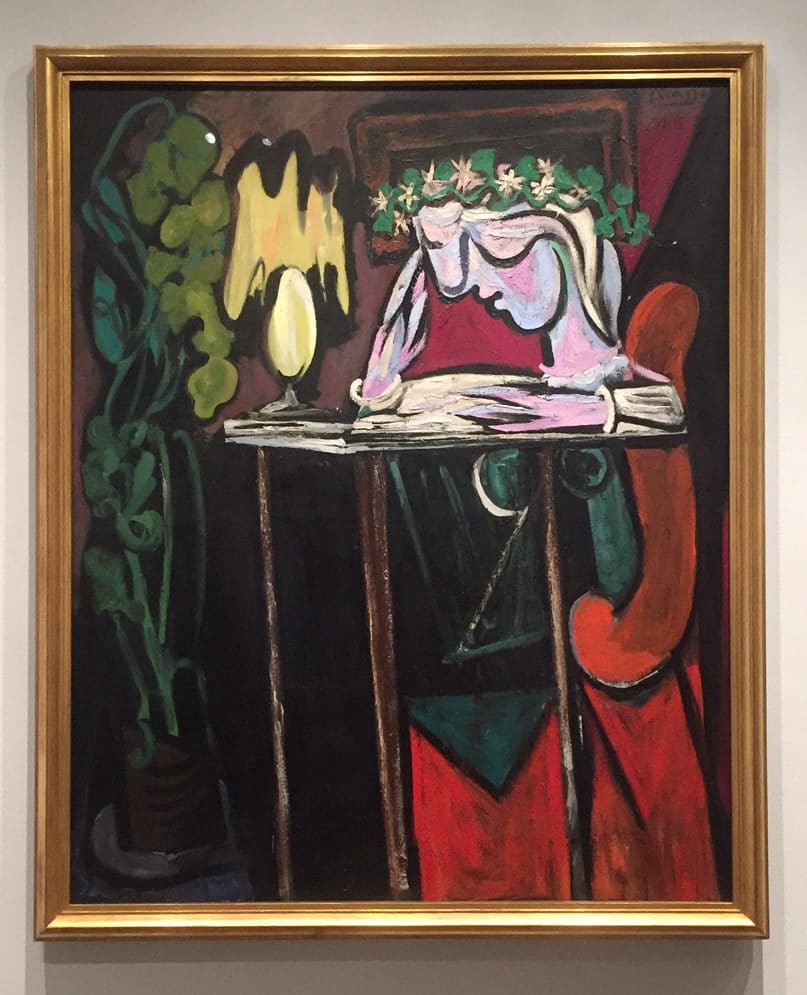
Should you get the audio guide at the Picasso Museum in Barcelona?
If you’re interested in learning more about Pablo Picasso’s life and his artworks, I recommend getting the audio guide at the Picasso Museum in Barcelona. It provides in-depth information on 51 notable pieces in the collection and offers insight into the historical context in which they were created.
The guide is easy to use, allowing you to navigate the galleries at your own pace while enhancing your understanding and appreciation of the exhibits. It will help you to make the most out of your visit and gain a deeper understanding of Picasso’s art.
Can You Take Photos Inside the Picasso Museum in Barcelona?
Yes, they now allow you to take photos in the exhibition space if it is for personal use, but you cannot use a flash or a tripod.
Barcelona Picasso Museum Opening Times
Keep in mind, the Picasso Museum Barcelona opening times are 10 am until 7 pm Tuesday through Sunday. The museum is closed on Mondays and January 1st, May 1st, June 24th, and December 25th. Find the most up to date information on their opening hours here.
Is the Barcelona Picasso Museum Good for Kids?
Yes, it can be a great educational and cultural experience for them. While there are no interactive exhibits, the museum does offer a children’s audio guide that provides an engaging experience through various senses, movements, and games. This guide can help encourage children to look closely at the artwork and learn more about Picasso’s life and artistic techniques. Overall, the museum can be a great way to introduce children to the world of art and history.
How To Visit the Barcelona Picasso Museum for Free
To make the most of your visit to the Picasso Museum, you may want to plan ahead and take advantage of the museum’s free admission days. The museum offers free entry on the first Sunday of every month, as well as on Thursdays from 4 pm to 7 pm. Additionally, the museum has a few open door days throughout the year. Get the details here.
However, keep in mind that there is limited capacity during free-of-charge opening times, so you will need to get a ticket with an assigned access time. You can book it here up to 4 days in advance of the free-of-charge day.
If you’re interested in visiting other attractions in Barcelona, consider getting a tourist card like the Barcelona Pass, Barcelona City Pass, or the Barcelona Card, which includes admission to the Picasso Museum. This can be a cost-effective way to explore the city’s top sights.
RELATED: Why You Should Visit the Fitzwilliam Museum in Cambridge
Is the Picasso Museum in Barcelona Worth Visiting?
If you’re a fan of art, history, or simply curious about one of the most famous artists of all time, the Picasso Museum in Barcelona is definitely worth visiting. Even if you have to pay for admission, the experience is well worth it. The museum showcases a wide range of Picasso’s work, from his early years to his later years, and provides valuable insights into his artistic process, influences, and personal life.
The museum is well-organized and easy to navigate, with a chronological arrangement of the artwork and informative audioguide. You can appreciate the evolution of Picasso’s style and technique, from his realistic portraits as a teenager to his groundbreaking innovations in Cubism and beyond. The museum also features some of his lesser-known works, such as sculptures and ceramics, which offer a different perspective on his creativity.
If you’re on a tight budget, you can plan your visit around the free admission days. Alternatively, consider purchasing one of the city passes that include the Picasso Museum, as it can save you money and time if you’re planning to see other sights in Barcelona.
Overall, I highly recommend visiting the Picasso Museum in Barcelona, as it offers a unique and fascinating glimpse into the life and work of one of the most influential artists of the 20th century.
RELATEED: Barcelona or Madrid – Which is the Best City to Visit?
I know there are other Picasso Museums in the world (Paris and Malaga for example), that I hope to visit. Have you been to any of the Picasso Museums? I would love to hear about your experience.
-Anisa
Pin for Later
Expert Tips for Your Visit to Picasso Museum Barcelona
- Buy your Picasso Museum tickets in advance to avoid the long line. If tickets are sold out you can always buy get a Picasso Museum Barcelona skip the line tour through Viator. (Click here to check options and schedule)
- Remember the Picasso Museum Barcelona has free entry times.
- I would plan on spending 1.5 – 2.5 hours at the Picasso Museum.
- If you would like to try tapas near the Picasso Museum Barcelona, I would recommend Lonja de Tapas. We went after our visit and enjoyed it.
Disclosure: No financial compensation was received, but the Picasso Museum did provide complimentary tickets. As always, opinions expressed here are my own.
This post also contains affiliate links. This means we will receive a small commission for some purchases made using links in our blog with no additional cost to you. Please be assured we would not promote any product unless we believe that our readers will also benefit. The commission does not influence the editorial content of this site.
Last Updated on March 24, 2023

